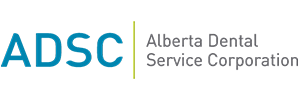
Can I Drive After a Tooth Extraction? Practical Advice and Precautions
Undergoing a tooth extraction can be a significant dental procedure that leaves patients with several questions about the recovery process, including whether it’s safe to drive afterward. The ability to drive post-extraction depends on various factors, including the complexity of the extraction, the type of anesthesia used, and your overall health. This detailed guide will explore these factors to help you understand when it might be safe to get behind the wheel and what precautions should be taken.
Can I Drive After Getting a Tooth Pulled?
Generally, whether you can drive post-extraction depends on various factors, including the procedure complexity, the type of anesthesia used, and how you feel post-surgery. It’s essential to make this decision with your health and safety in mind.
If you’ve recently undergone a tooth extraction and are in the SW Calgary area, consulting with a trusted dentist in SW Calgary can provide specific guidance tailored to your situation.
Understanding Tooth Extraction and Anesthesia
Tooth extractions are performed for several reasons, including severe decay, infection, and impacted wisdom teeth. The procedure’s nature and the anesthesia type significantly influence your recovery timeline, including your ability to drive.
- Local Anesthesia: If your extraction involves only local anesthesia (numbing the area around the tooth), you might not be significantly impaired. Patients often can drive themselves home after the procedure. However, it’s essential to wait until the numbness wears off to ensure full control over your vehicle, as numbness can affect your ability to drink, eat, or speak clearly.
- Sedation Dentistry: For more complex extractions or for patients with dental anxiety, dentists may use sedation techniques such as oral sedatives, nitrous oxide (laughing gas), or intravenous (IV) sedation. These methods induce a relaxed state and can highly affect your judgment and motor skills, making it unsafe to drive.
- General Anesthesia: Used in more complex cases, such as impacted wisdom tooth removal, general anesthesia renders you completely unconscious. After receiving general anesthesia, you will need someone to drive you home, as your cognitive and motor skills will be significantly impaired for several hours.
If you are looking for tooth extraction in SW Calgary, consult with Image Dental – a leading dental clinic in Calgary, to discuss the procedure and plan for a safe transportation option post-treatment.
Immediate Aftercare: The First Few Hours
After the extraction, your dentist will provide specific aftercare instructions to aid in healing and minimize discomfort. These may include biting on a gauze pad to reduce bleeding, avoiding certain foods, and not disturbing the extraction site.
Factors to Consider Before Hitting the Road
Medication and Sedation Effects
- Type of Anesthesia: Local anesthesia might allow for driving afterward, but general anesthesia or sedation requires someone else to take the wheel.
- Pain Medications: Pain relief medications, especially opioids, can impair your ability to drive safely.
Bleeding and Discomfort Levels
- Bleeding: Managing bleeding is crucial. Driving is not advisable if you are experiencing significant bleeding post-extraction.
- Discomfort: Post-procedure discomfort might distract you from driving safely.
Personal Well-being and Safety
- Dizziness and Nausea: These can result from the anesthesia and might impair your driving abilities.
- Mental Alertness: Ensure you’re mentally alert and physically capable of controlling your vehicle.
When is it Safe to Drive?
- Post-Local Anesthesia: Generally safe once the numbness subsides, but ensure you feel mentally alert and physically comfortable operating a vehicle.
- Post-Sedation or General Anesthesia: It is advised to wait at least 24 hours before considering driving. Ensure any drowsiness or disorientation has completely passed. You must also consider the effects of any pain medication you’re taking.
Alternatives to Driving Post-Procedure
If you’re unsure about your ability to drive safely:
- Ask for a friend or family member to drive you home.
- Consider using public transport or a taxi/ride-sharing service, ensuring you feel comfortable and pain-free during the journey.
Conclusion
Deciding to drive after getting a tooth pulled depends on the type of anesthesia used and your response to the procedure and any prescribed medications. While you might be able to drive yourself home after local anesthesia, sedation, and general anesthesia require you to have someone else drive you. Listening to your body and erring on the side of caution is essential. Prioritize your safety and the safety of others on the road by planning not to drive if you’re feeling anything less than capable. Always follow your dental professional’s advice and ensure you have the necessary support during your recovery period.
FAQs: Common Concerns Addressed
The waiting period varies. It's recommended to wait until the effects of anesthesia wear off and you feel alert.
It's best to have someone else drive you home, even if you feel okay, as the full effects of the anesthesia may not have worn off.
You might be able to drive, but it is wise to assess how you feel and consider any pain medications you have taken.






















